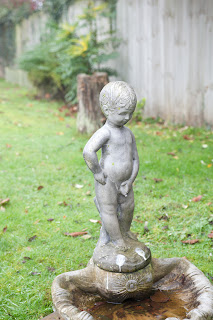During the shoot of Busy St Edmunds Christmas Fayre I took a total of 122 shots - 38 during the daytime and 84 during the evening shoot. I downloaded them all directly from the camera to Adobe Bridge which is the software I use for reviewing images.
Initial sift - I discarded a total of 43 images in the initial shift:
- Overexposed 10
- Underexposed 9
- Slow Shutter speed 7
- Poor composition 11
- Repetition 6
Overexposure occurred mainly in the evening shots particularly whilst taking a test shot. Inevitably there was a very wide range and there was a need to find a setting that captured most of the range.
Underexposure was a product of aiming for a shutter speed that made hand held shooting a reasonable hope of success whilst retaining an acceptable depth of field.
Slow shutter speed was primarily the result of test shots but also where the best shutter speed was less than needed to freeze movement.
Poor composition was where I had failed to notice unwanted elements in a picture - particularly safety barriers that seemed to be everywhere often in stacks or on looking at an image on the computer I had to ask myself what I was thinking of at the time.
Repetition is where I took more than one shot of the same thing to get the best result.
I cannot say whether discarding 35% of the images at first shift is usual for me as I have never carried out this sort of analysis. The reasons are the usual although problems with exposure is unusually high because of the conditions under which the images were taken.
I used the star rating system available in Bridge to sort by my initial reaction to the remaining images:
- * 4
- ** 31
- *** 43
- **** 1
I then went through these images to see if they warranted further work or could be discarded taking particular note of the composition of the image, its initial impact as an image and whether the focus was acceptable throughout the image. Using this process I discarded a further 26. With the remaining 53 images I opened them using Camera RAW applying the steps outlined in my blog on Exercise 1 to all of them. I then looked at those that were of similar parts of the fayre retaining those that in my opinion were the best examples. I also eliminated those that I felt were of a lower standard than the others that remained.
Throughout this process I bore in mind that ultimately I would have to select two images. In addition I could retain a larger number for showing to colleagues. For this latter exercise I retained 17 images including a small number that highlighted problems that I had encountered so that they could be a subject of discussion.
I then proceeded to select my final two images. I had decided that these would be the two that, in my opinion, represented the Fayre.
There s a tradition at the Fayre for stallholders to dress in Victorian Costumes. I felt that these two ladies had gone that little bit further to exemplify the spirit of the Fayre.
I chose this image because it not only provides a clue as to the time of year (the Santa's on the market stall) but also the atmosphere of the market element.
The reduction of 122 images to just two was a considerable challenge and there was a need to concentrate on the underlying reason for the shoot. Of the final 17 shots that I processed fully possibly 10 of them would have been suitable for the final two. At the end of the day I went with my own reactions because on this occasion I was the final arbiter.
The two exercises combined I found to be challenging with Exercise 4 being the most challenging. I had to think carefully about the amount of work that I could create for myself if I decided to process all the images before the final selection. Probably on reflection I could have been more ruthless in selecting those that I fully processed as 27 demanded a significant period of time. Always underlying my later decisions was the thought that I might be missing an image that was 'lost' in the larger image.























